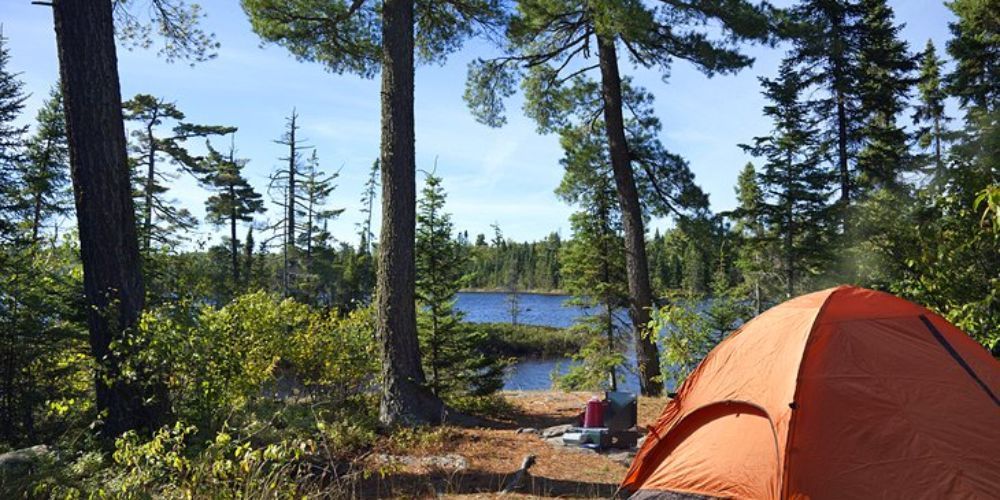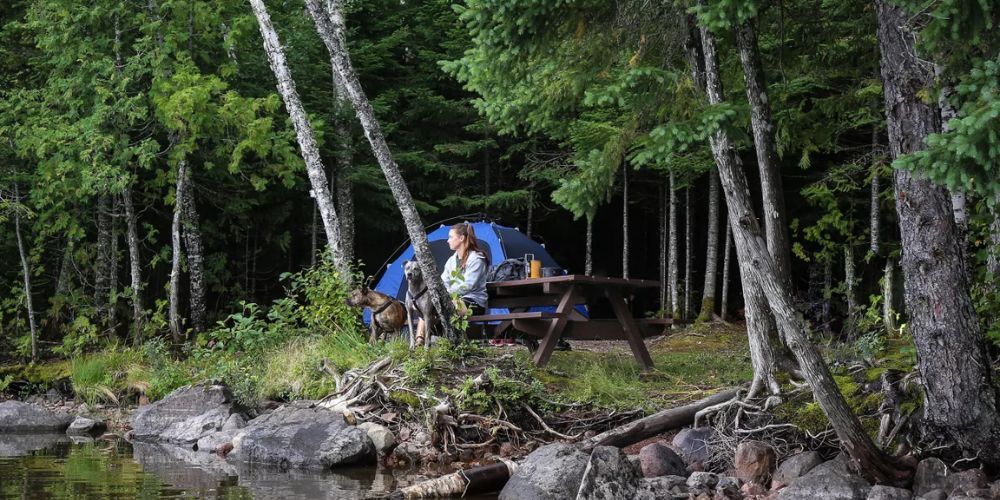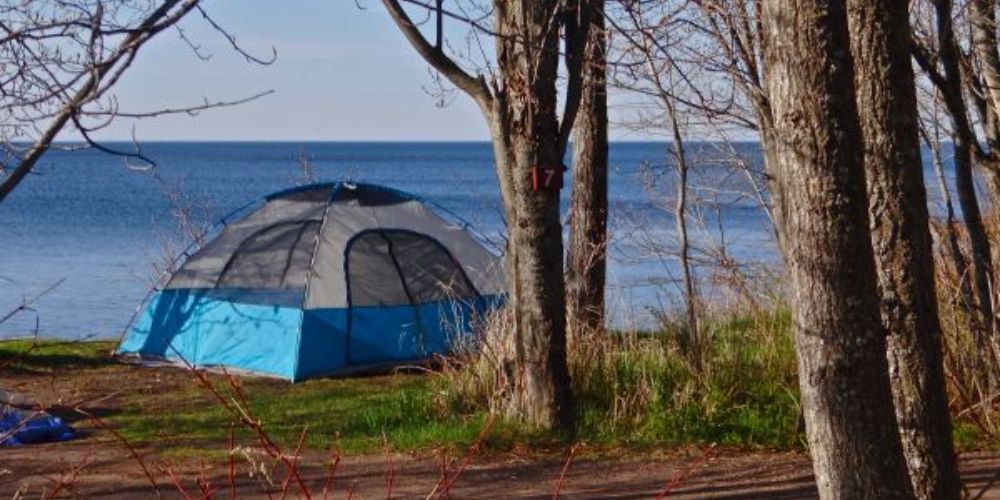Camping in Minnesota: Your Guide to the Best Outdoor Sites
Camping in Minnesota is an adventure waiting to happen, offering everything from deep green forests to sparkling lakeshores. Whether you seek solitude among towering pines or prefer facilities closer to modern comforts, this state has something special for every camper.
To create this guide, we carefully examined numerous sites, gathered testimonials from frequent visitors, and explored firsthand the hidden gems within Minnesota's vast wilderness. You might be surprised by the unique amenities at certain campsites that can turn a good trip into an extraordinary one. Let's dive into these must-visit locations and uncover what makes them stand out—starting with secluded wilderness areas to more developed campgrounds.
Some of the best places for camping in Minnesota include Voyageurs National Park, Itasca State Park, and Gooseberry Falls State Park, each offering unique natural beauty and a range of outdoor activities. These locations provide excellent amenities, scenic views, and opportunities for hiking, fishing, and wildlife observation.

Top Spots for Camping in Minnesota
One standout destination is the Boundary Waters Canoe Area Wilderness (BWCA), a dream location for those looking to immerse themselves in nature. With over a million acres of untouched wilderness filled with shimmering lakes and vibrant forests, campers will find over 1,200 miles of canoe routes to explore. Imagine paddling through crystal-clear waters while surrounded by breathtaking scenery and the sounds of nature. The BWCA hosts approximately 2,000 designated campsites where you can set up camp and truly feel one with the wild. If you’re seeking solitude and adventure all wrapped into one, this area is hard to beat.
Now let's shift our focus from the wild expanses of BWCA to one of Minnesota's most iconic state parks.
Itasca State Park is another gem, known particularly for being home to the headwaters of the mighty Mississippi River. Spanning over 32,000 acres, this park provides an excellent camping experience with multiple campgrounds designed for various preferences, ranging from tent sites to log cabins. It also features numerous hiking trails that weave throughout the park, guiding you past historical markers that tell stories of both the land and its significance. Campers here can luxuriate in rich wildlife sightings and feel the history beneath their feet as they walk along paths that echo tales of the past.
If you're someone who appreciates more facilities at your campsite, there are several other locations worth considering.
For those leaning towards a well-equipped camping experience without sacrificing immersion in nature, places like Fort Snelling State Park and Gooseberry Falls State Park offer developed campgrounds combined with stunning vistas and easy access to activities. Both parks host modern amenities such as flush toilets, showers, and picnic areas alongside hiking trails that lead to picturesque waterfalls or river views. It’s an excellent balance for families or casual campers who want to enjoy nature but not give up on comfort.
These unique destinations showcase the diversity of camping experiences available across Minnesota. As we explore further, let’s take a closer look at some specific recommendations that highlight the best parks and campgrounds in the state.
Best State Parks and Campgrounds
Minnesota's state parks are well-recognized for their immaculate campgrounds and breathtaking natural attractions. One standout is Gooseberry Falls State Park, famous not only for its stunning waterfalls but also for its well-kept campsites.
With 69 drive-in and three backpack sites, there's a perfect spot for every type of camper, whether you're driving in with family or seeking solitude on a backpacking trip. Modern amenities like flush toilets and hot showers ensure you can fully enjoy the great outdoors without sacrificing comfort.
Frequent visitor Jane Richardson sums it up perfectly: "The falls are breathtaking, and the campsites are clean and spacious."
After enjoying the beauty of Gooseberry, a short trip will lead you to another gem, Split Rock Lighthouse State Park.
Split Rock Lighthouse State Park offers a unique blend of history and nature. Here, six cart-in campsites nestled among towering pines create a secluded atmosphere that feels like a retreat from the world. While these sites might require a bit more effort to access, the panoramic views of Lake Superior make every step worthwhile.
Imagine waking up to the sound of waves lapping gently at the shore and taking in that spectacular morning view as the sun rises over the lake—it's truly an experience worth savoring.
What makes these parks remarkable is their diversity in offerings; each park provides something different, catering to various interests from hiking and fishing to simply relaxing by the water. This versatility ensures that they are ideal choices for weekend getaways or longer retreats where you can disconnect from the hustle and bustle of everyday life.
Now, turning our attention to another category of camping options in Minnesota, let's explore sites that cater specifically to water enthusiasts.
Lakeside Campsites You Need to Visit
Minnesota is known as the Land of 10,000 Lakes, making lakeside camping a must-try experience. The calming sound of lapping water and the gentle rustle of trees create an inviting atmosphere that feels miles away from the hustle and bustle of daily life. When you set up camp near one of these scenic waters, you'll be greeted with tranquil mornings and serene sunsets. One captivating place to consider for your next adventure is Lake Vermilion, nestled within Soudan Underground Mine State Park.
Lake Vermilion-Soudan Underground Mine State Park
Lake Vermilion boasts 33 boat-in campsites scattered along its expansive shorelines, each providing unmatched peace and privacy. Imagine stepping off your canoe or kayak directly onto your campsite, surrounded by tall pines and the soft buzz of nature. The lake itself offers countless opportunities for outdoor activities—fishing enthusiasts can cast their lines into clear, inviting waters teeming with bass and pike. If you're in the mood for a refreshing swim or peaceful kayaking, this slice of paradise grants access to it all.
Just a short drive away lies another gem waiting to be explored.
Lake Itasca
Not far from the banks of Lake Vermilion is Lake Itasca, an incredible spot not only for its scenic beauty but also as the headwaters of the mighty Mississippi River. This area hosts numerous lakeside campsites perfect for fishing, hiking, and enjoying nature trails. With its breathtaking landscapes, Lake Itasca is ideal for families seeking both adventure and relaxation.
Once settled at your lakeside site, many will be eager to explore surrounding trails; those options are coming up next.
Trails and Hiking Adventures
Hiking is an essential aspect of camping in Minnesota, offering a unique opportunity to connect with nature in ways that just sitting around a campfire can't match. From serene walks along the lakeside to challenging mountain climbs, Minnesota’s trails cater to adventurers of all levels. The vibrant natural beauty, coupled with a diverse array of wildlife, makes for an unforgettable outdoor experience.
Superior Hiking Trail
The Superior Hiking Trail is a highlight for many campers, stretching nearly 310 miles along the breathtaking North Shore of Lake Superior. This trail is known for its rugged terrain and challenging climbs, rewarding hikers with spectacular vistas that make every step worthwhile. As you traverse this path, prepare yourself for various environments—from dense forests to rocky overlooks that let you gaze over the shimmering waters below. The well-placed shelters along the route are invaluable for those hiking the entire stretch, giving weary trekkers a place to rest and rejuvenate before continuing their adventure.
"The trail leads you through a living postcard; each turn reveals another breathtaking view."
North Country Trail
Another gem in Minnesota's collection is the North Country Trail. This expansive trail weaves through several state parks, national forests, and wildlife refuges, showcasing varying ecosystems—an experience that offers something new with each hike. Whether you're meandering across rolling hills or making your way through lush woodlands, the diversity is remarkable. John Walker, an avid hiker, reflects on this saying, "The changing landscapes along the North Country Trail keep every hike fresh and exciting," capturing the essence of what makes this trail special.
Beyond just physical exercise, exploring these trails provides immense spiritual rejuvenation too. Hiking allows individuals not only to engage their bodies but also to disconnect from daily stresses and reconnect with nature—a dual benefit that many campers find rejuvenating.
That said, before setting off on these adventures among Minnesota's captivating landscapes, it's crucial to cover some practical considerations to ensure a smooth hiking experience. Let's take a closer look at what you'll need to know regarding reservations and permits for your journey.

Planning Your Trip: Reservations and Permits
Proper planning is not just about packing the right gear; it's also about securing your spot in nature. The world of camping in Minnesota requires some foresight, particularly if you're aiming for those coveted campsites along the stunning North Shore or the pristine Boundary Waters Canoe Area Wilderness (BWCA). These precious locations are popular for a reason, and without thoughtful planning, you may find yourself scrambling for alternatives or facing penalties for parking where you shouldn't.
Making Reservations
One of the most efficient ways to navigate this process is through the Minnesota Department of Natural Resources’ online reservation system. Booking your campsite well in advance—up to a year ahead—is not merely a suggestion but often a necessity. If you have your heart set on staying at renowned spots like Tettegouche State Park or Gooseberry Falls during peak summer months, don't delay. Popular sites can fill up within days of reservations opening. This proactive step ensures that you'll have a designated area to pitch your tent when you arrive, allowing you to relax rather than search frantically for a last-minute site.
When making reservations, pay special attention to specific amenities or requirements that may differ from one site to another. Some areas might offer electrical hookups for RVs while others may only cater to tent campers. Understanding these nuances can enhance your camping experience significantly.
Obtaining Permits
In certain regions, particularly within the BWCA, obtaining a permit is not just recommended—it’s mandatory. This is an essential part of responsible outdoor management aimed at preserving the area's natural beauty and minimizing human impact. You can find detailed information regarding permit regulations, quotas, and specific requirements on the U.S. Forest Service website . It provides comprehensive insights into what you need based on your planned activities, whether canoeing or hiking.
If you're eyeing a trip during peak season—like late spring or early fall—be prepared to secure those permits several months in advance. The BWCA has strict quotas limiting groups in each area to protect its delicate ecosystem; thus, waiting until the last moment could lead to disappointment as spots fill rapidly.
In addition to understanding campsite reservations and permits, it's wise to familiarize yourself with the rules and guidelines that come with them. Adhering to these regulations not only keeps you compliant but also promotes the preservation of Minnesota's breathtaking landscapes for future adventurers.
As we look forward, embracing environmentally responsible practices is vital for every camper, ensuring that our beloved outdoor spaces remain pristine for generations to come.

Essential Tips for Responsible Camping
When you venture into Minnesota’s pristine outdoors, it's essential to understand that your presence can impact those surroundings. Responsible camping is fundamentally about making choices that honor the environment and everyone who enjoys it. This starts with the Leave No Trace principle, which emphasizes that your visit should leave no evidence behind. Think of it this way: every piece of trash you carry back home is one less item spoiling the landscape for someone else. It's about merging respect for nature with enjoyment; bringing back memories instead of litter.
Always pack out all trash, including food scraps and biodegradable items, because while they break down, they can still attract unwanted wildlife.
Carry reusable containers and utensils, drastically reducing your reliance on single-use plastics. The more we minimize our waste, the more beautiful our campsites remain.
It’s fascinating to realize how your small actions can create a ripple effect towards preservation. By respecting wildlife, you allow these creatures to thrive in their natural habitats. Keep a respectful distance from animals; observe them quietly without intruding.
Maintaining a safe distance from wildlife isn’t just premium practice; it protects both the animals and you as well. Feeding animals not only alters their natural behaviors but can also lead to dangerous encounters. Imagine encountering a wild animal that comes too close because it associates people with food—that’s risky for everyone involved.
Moreover, fire safety plays a crucial role in responsible camping, especially given how quickly a small spark can turn into widespread devastation.
Important Practices
Use designated fire rings when building your campfire and keep those flames controlled and manageable. A smaller fire not only conserves resources but is also easier to extinguish completely before you leave. Ensure your fire is thoroughly extinguished by dousing it with water, stirring the ashes, and repeating until you're confident it's out. As a personal technique, I’ve learned to check for residual warmth by placing my hand close—if it feels hot at all, it's not done yet!
As campers in Minnesota, practicing responsible behavior means considering how our habits will affect future generations who wish to explore these amazing landscapes. Simple steps like using portable water filters dramatically reduce plastic waste caused by bottled water purchases, proving that sustainable choices are not just beneficial—they're essential.
These small efforts collectively make a big difference, ensuring Minnesota's natural beauty can be enjoyed for generations to come.
Adopting these responsible camping practices will not only ensure an enjoyable experience for you but also foster an appreciation in others for the vibrant outdoor spaces we share. Each individual contribution counts towards preserving the stunning landscapes of Minnesota for everyone who seeks adventure in its wilderness.
Author: William Flaiz
Check out these other activities in Minnesota
Check out activities in these nearby states: Wisconsin , Illinois , Iowa , South Dakota , North Dakota
